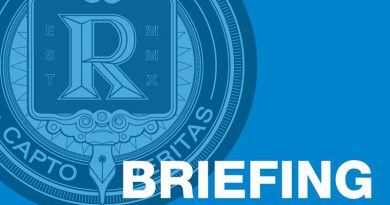Here’s What You Need To Know About The Revamped FAFSA Form
If you haven’t completed the Free Application for Federal Student Aid for the 2024-25 school year, you’ve probably heard about changes to the application.
Here is what you should know about the form that became available on Dec. 30.
Revisions to the application—which uses financial information to determine whether students qualify for federal aid to pay for college—are a result of Congress’ FAFSA Simplification Act. Enacted in 2020, the legislation aimed to simplify the federal student aid application process.
The new form features approximately two-thirds fewer questions, according to a report by CNN, following the implementation of the IRS Data Retrieval Tool, which imports U.S. tax return information directly into the FAFSA form.
While the IRS DRT has been an optional tool for students in previous years, this is the first time its use is mandatory.
All contributors—students, spouses, parents—must create a Federal Student Aid account and give consent for their tax information to be transferred virtually to the FAFSA form.
In previous years, parents who live abroad had to physically sign the form. However, if a contributor declines, like in previous years, the student will not be eligible for federal aid.
Completing The Form
Students have 45 days to finish their application once they open it. After 45 days, any progress made will be deleted and they must restart the application.
Although the FAFSA form is only available in English and Spanish, students can now request an interpreter through a hotline that features representatives fluent in Arabic, Cantonese, French, French Creole, German, Korean, Mandarin, Russian, Tagalog and Vietnamese.
The new application also increased the number of schools students can send their FAFSA to from 10 to 20. It replaced the Expected Family Contribution calculator with the Student Aid Index.
Another major change includes the removal of questions that forced students to disclose whether they registered for the Selective Service or had a prior drug conviction.
Speed Bumps
There have been hiccups in the implementation of the new application.
Typically, the FAFSA form becomes available on Oct. 1. This year, it intermittently became available for periods of 30 to 120 minutes during a soft launch from Dec. 30 to Jan. 1.
While more than 30,000 forms were successfully submitted, according to the Department of Education, students experienced issues completing their applications. The website was also periodically unavailable due to maintenance and data-collection.
Last month, the department announced that institutions won’t receive students’ FAFSA applications until March. In the past, schools received FAFSA applications by late January.
The delay is due to the department’s effort to correct a mistake—they failed to account for inflation in the formula used to calculate students’ financial aid eligibility, the Washington Post first reported.
Berta De Leon, the director of the financial aid department at North Campus, said students who are anxious about the delay should not fret.
“We’re all in the same boat,” De Leon said. “It’s not like FIU is gonna receive [the FAFSA] before Miami Dade [College]. When they say, ‘you’re gonna get it,’ we’re all gonna get it at the same time.”
The Department of Education created a page that features additional issues students are encountering, including things like parents who don’t have a Social Security number.
Miami Dade College’s financial aid department is offering in-person assistance, virtual sessions and workshops, such as Family FAFSA Night, to help those struggling with the form.
Even if students don’t qualify for federal aid, they should complete their FAFSA because they may be eligible for state or institutional funds such as grants, loans and merit-based scholarships.
“You have to apply for financial aid,” De Leon said. “Why? Because [institutions] want to see if you might be entitled to any other type of funding and they want to make sure that you optimize all your chances of getting something.”
For questions regarding financial aid, visit https://www.mdc.edu/financialaid/.
Click here to subscribe to our bi-weekly newsletter, The Hammerhead. For news tips, contact us at mdc.thereporter@gmail.com.




